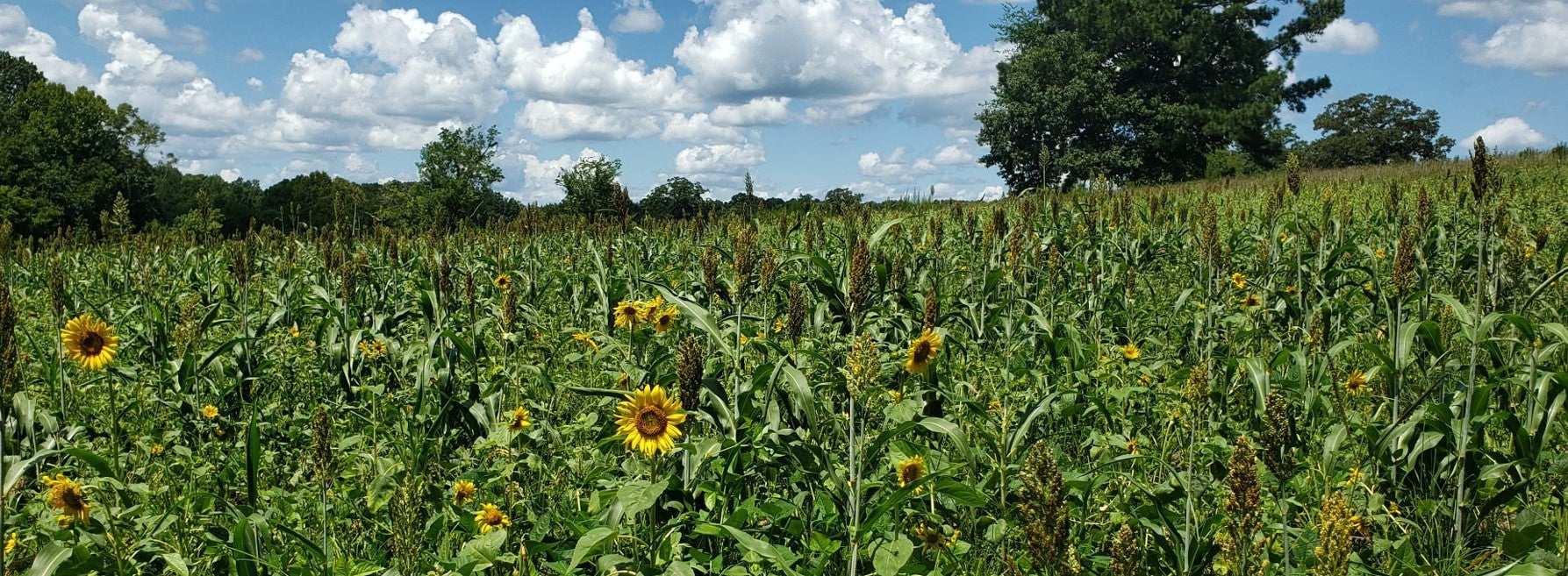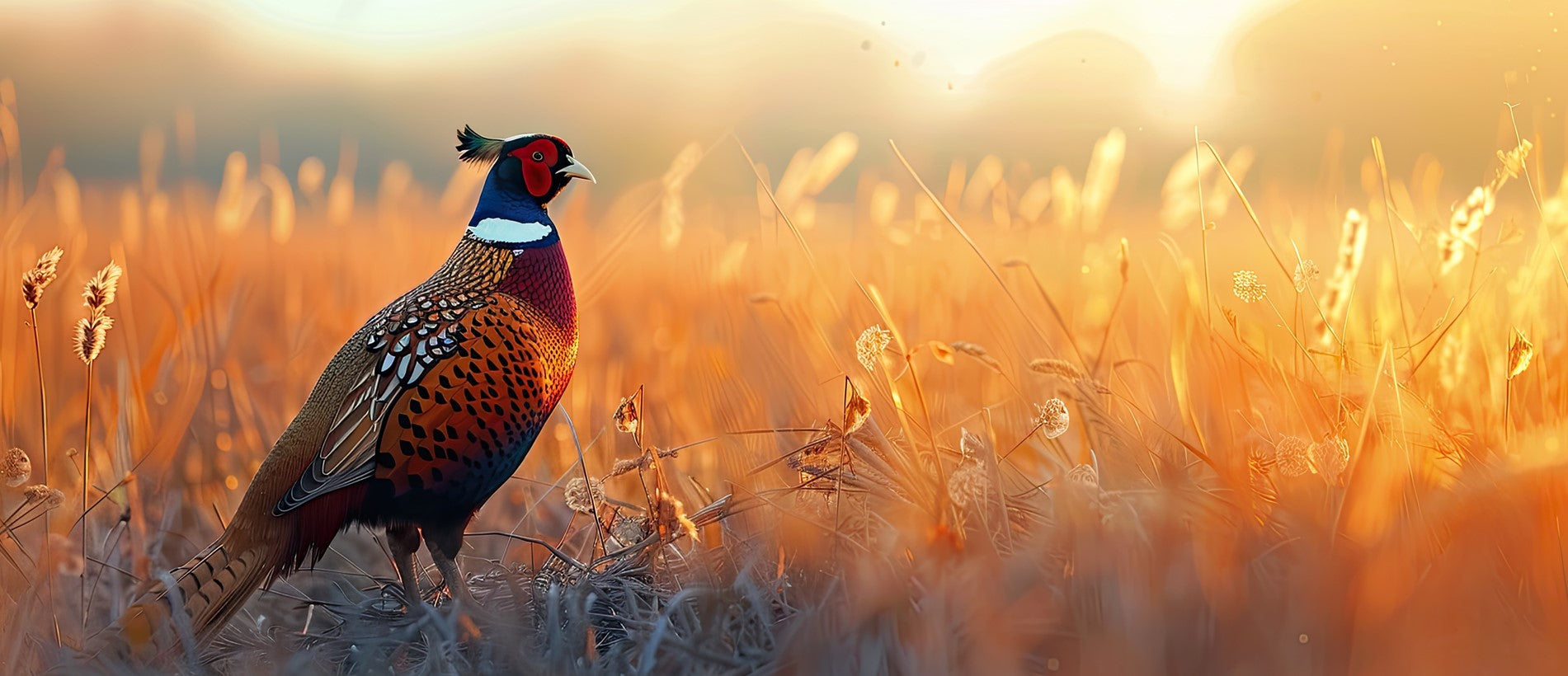Low Pressure Hunting - Part I
As we stood glassing from a hill overlooking several distant deer-dotted alfalfa fields scattered along Montana’s Milk River, one of our party of five pointed to a pod of bucks in an isolated field, his voice cracking with excitement, and said, “I want to be right there, sitting on that field at daybreak tomorrow morning when season opens.”
Among nods of agreement, I knew that what I was going to say next would stir some dissention. “Let’s lay off the fields until the afternoon. If we try to hunt them in the morning, we’ll have to run the deer off to get to the stands. If we wait until midday, the deer we have left the fields and we can sneak into the stands without them being aware we’re there. That way, we’ll be hunting them totally unmolested. The slightest disruption could put the big bucks down. We’ve got to do this right.”
Before the protests could begin, I hastily blurted out the alternate plan, “Let’s set up near the river along the east and west boundaries in the morning and take advantage of any outside pressure that might push deer onto the ranch. Plus, we’ll be able to head off any interlopers who might have seen all those bucks on the fields.”
Looking longingly at the scores of deer in the mile-away fields, all agreed to wait until the following afternoon get at one of the largest concentrations of deer any of us had ever seen.
The plan worked. Carefully, methodically, we sneaked into the vacated fields at midday and took up our vigilance unnoticed. When the shadows began to fall across the fields, the deer poured in. After four days of this, all five hunters had shot (but not necessarily recovered – that’s another story) bucks over 150! Low impact hunting made it possible.
For most of us, the days of roaming vast, unhunted countryside in search of big bucks are over. Today, the large tracts of land are usually open to the public and see plenty of hunting pressure. To find the solitude we deer hunters so value, we are having to turn to small tracts of private land that can be protected and managed. On many such tracts, wise management can restore the deer herd to its natural, well-balanced state, where deer are free to do what they do naturally. And, an essential part of any successful management program is a balanced, aggressive deer harvest. The more intensive the program, the greater the harvest demands.
Harvesting deer inevitably means hunting pressure, which, as we’ve often discussed, rapidly erodes natural deer behavior and movement. Unfortunately, the most desirable segment of the deer herd – trophy bucks – are the first to react adversely to pressure. They simply disappear from the scene, becoming all but nocturnal. So, the challenge on small tracts, especially on managed tracts with the goal of producing big bucks and maintaining as near to natural behavior and movement as possible, is to minimize the adverse effects of hunting pressure to the greatest degree possible. Simply stated, try not to let the deer know they are being hunted. That dictates a low pressure hunting strategy.
How do we go about minimizing the effects of pressure? The ways are many and varied, depending on the tract and the circumstances. An entire article could be devoted to any number of the topics we’ll touch on, but here, we’re going to thumbnail some of the more important ones and trust that your hunting savvy can apply the concepts to your situation.
Develop A Hunting Strategy
Low impact hunting requires that you think ahead. You only get one shot at doing it right. Once you’ve messed up a place, which can happen in a mere matter of days, only time will reverse the damage, and the time needed for the cure could out-last the season. The strategies are myriad, far too many to be covered here, though we will look at a couple of important general strategies. The point is, make a plan before charging in and possibly driving deer underground. Be methodical, cautious and creative.
Don’t forget about neighboring pressure; it can greatly affect you. On Burnt Pine Plantation, where I ran commercial hunts for 20 years, we always faced an onslaught of early season pressure on our boundaries by neighbors who subscribed to the grass-is-greener theory. In an effort to turn the pressure to our advantage, to be sure we got our share of the bucks that were sure to die anyway and to defer pressure from our interior, we concentrated our first week or two of hunting on the perimeters. Our aim was to be much less intrusive than our neighbors, thereby making our property more attractive to pressured deer. (As water flows to the lowest spot, so deer flow to the lowest pressure.) The strategy worked grandly, leaving us with an undisturbed interior to move into later.
Somewhat along those same lines, another general strategy worth mentioning is what I call “concentric pressure.” Basically, it involves hunting the nearest and/or most-likely-to-be-disturbed areas first, leaving the more distant or remote places for later. If close-in or thoroughfare areas are going to be disturbed by increased hunting-associated traffic and activity as you and you party spread out to hunt the far corners of the property, doesn’t it make sense to hunt the nearby places first while they are undisturbed? Then, as pressure and traffic take their toll, gradually move into virgin territory. Let effective hunting effort pressure an area, not just traffic and ineffective activity.
Another similar big-picture strategy I try to put to practice is what I call “progressive aggressive hunting.” In a nutshell, whether hunting a particular deer or a place, it means hunting in the least obstructive manner possible to start with and gradually getting more aggressive as the need dictates. For instance, say you’ve patterned a big buck. You know where he is likely bedding and feeding and what travel lanes he seems to be using. Under the progressive aggressive strategy, I’d start out hunting this buck on the “outside edge” of his pattern, i.e., the food source. If that didn’t work, I’d move to a trail near the food source. That failing, I’d move to an ambush point ever nearer the bedding area. You get the picture. I can assure you that the more aggressive you get, the greater the odds you’ll be detected and the shorter the time you’ll have to get the job done before the buck goes underground.
One of the compromises that pains me on low impact hunting is that still-hunting (slipping around on foot) must give way to stand hunting … unless there’s plenty of space and few hunters to cover it. A human sneaking around on foot is virtually shouting “I’m up to no good” to deer. It’s the predator look. Plus, there’s the huge added liability of laying scent down throughout the deer woods. Deer react swiftly to this program. A few people on foot in a few days can completely disrupt normal deer activity. Stand-hunting is the method of choice for low impact hunting.
Fields Require Extra Caution
You can’t believe how little disruption it takes to move old, big bucks from the daylight role-call on open food sources. Does, fawns, young bucks – oh, they’ll hang around for a while after a couple of rounds of aggravation, but not wizen old trophies. They will view even one overt intrusion with great suspicion. If not repeated, they might let it pass as “one of those things.” But, let it happen again within a short time, and they are history. You see, mature whitetails are incredibly astute at identifying patterns, and if they consider a pattern threatening, they quickly stop whatever they were doing that exposed them to the potential danger, i.e., they change their pattern. If you want to kill trophy bucks on open food sources, you cannot give them any reason to suspect you’re lying in wait for them. After all, they are already naturally paranoid about being in the open during the glare of day.
Don’t Invade Secure Bedding Areas
A big buck’s bedding area is his sanctuary. If he is bumped from his private quarters more than once in short order, he shifts to red alert status and moves to a defensive posture, making him very hard to see or kill. Don’t walk or drive through known bedding areas unnecessarily, especially if doing so represents a break in routine. Many people “scout” their way right out of trophy success by alerting area deer that something amiss is afoot.
Time Your Activity To Low Movement Hours
If you are going to be moving around, either on foot or in a vehicle, try to do so during midday hours when deer are more likely to be bedded. This especially applies to getting into and leaving a deer stand during the daytime. You odds of encountering deer and blowing your cover are far greater when they are on the move and alert. Plus, making your move during midday allows more time for your scent to dissipate before the deer show up.
When approaching (and to a lesser degree, leaving) a destination point for deer, i.e., scrapes, food sources, etc., do all you can to avoid running them off the place of attraction. This is critical on open food sources. Such intrusion not only has the direct effect of causing them to associate the spot with danger, but it also tips off deer to your stand location far more than you may realize. Often, a spooked deer will run only a short distance and then turn his sensory array back on the source of danger. It’s easy enough for a deer to use his eyes and ears to determine where an intruder has halted progress and then bring his nose to bear by circling downwind at a discrete distance to precisely pinpoint the danger. To a deer, a stealthy, hidden human spells “predator” and is to be avoided, now and tomorrow. For this reason, I seldom hunt open food sources in the morning. If time allows, I prefer to sneak quietly into the stand during early afternoon and take my chances at day’s end. After hours, I can usually sneak out in the cover of darkness, having already prepared a suitable exit route, without overly spooking nearby deer. Of course, all this speaks to the need to use wind and cover to the best advantage … always.
Posted by David Morris











Leave a comment